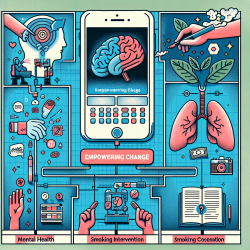Empowering Voices: Elevating Documentation of Communication Disabilities in EHR
In the realm of speech-language pathology, the accurate documentation of communication disabilities within electronic health records (EHR) is crucial for ensuring effective patient care. A recent study, "Silence in the EHR: infrequent documentation of aphonia in the electronic health record," highlights the gaps in documentation practices and underscores the need for standardized language and methods.
Understanding the Research
The study conducted a retrospective review of EHRs from patients who had undergone laryngectomy procedures at Northwestern Memorial Hospital between 2000 and 2013. The findings were revealing: only 16% of encounter notes included any documentation of patients' communication abilities, and providers used 39 different terms to describe aphonia. This inconsistency in documentation can hinder effective communication strategies and patient care.
Implications for Practitioners
For practitioners, this research highlights a critical area for improvement. Accurate and consistent documentation in EHRs can significantly enhance patient-provider communication, leading to better patient outcomes. Here are some actionable steps practitioners can take:
- Adopt Standardized Language: Use consistent terminology to describe communication disabilities. This ensures that all healthcare providers understand the patient's needs and can communicate effectively.
- Comprehensive Documentation: Include detailed notes on the patient's communication abilities and preferred methods. This information should be easily accessible to all members of the healthcare team.
- Training and Awareness: Educate healthcare providers on the importance of documenting communication disabilities and provide training on using standardized language.
- Utilize EHR Features: Leverage EHR functionalities to flag communication disabilities and suggest accommodations, ensuring that this critical information is not overlooked.
Encouraging Further Research
The study also calls for further research to develop standardized documentation practices for communication disabilities. By participating in research initiatives and contributing to the development of best practices, practitioners can play a vital role in improving patient care.
Conclusion
Improving the documentation of communication disabilities in EHRs is not just a matter of compliance; it is a commitment to providing patient-centered care. By implementing the findings of this research, practitioners can enhance communication, reduce misunderstandings, and ultimately improve the quality of care for patients with communication disabilities.
To read the original research paper, please follow this link: Silence in the EHR: infrequent documentation of aphonia in the electronic health record.










